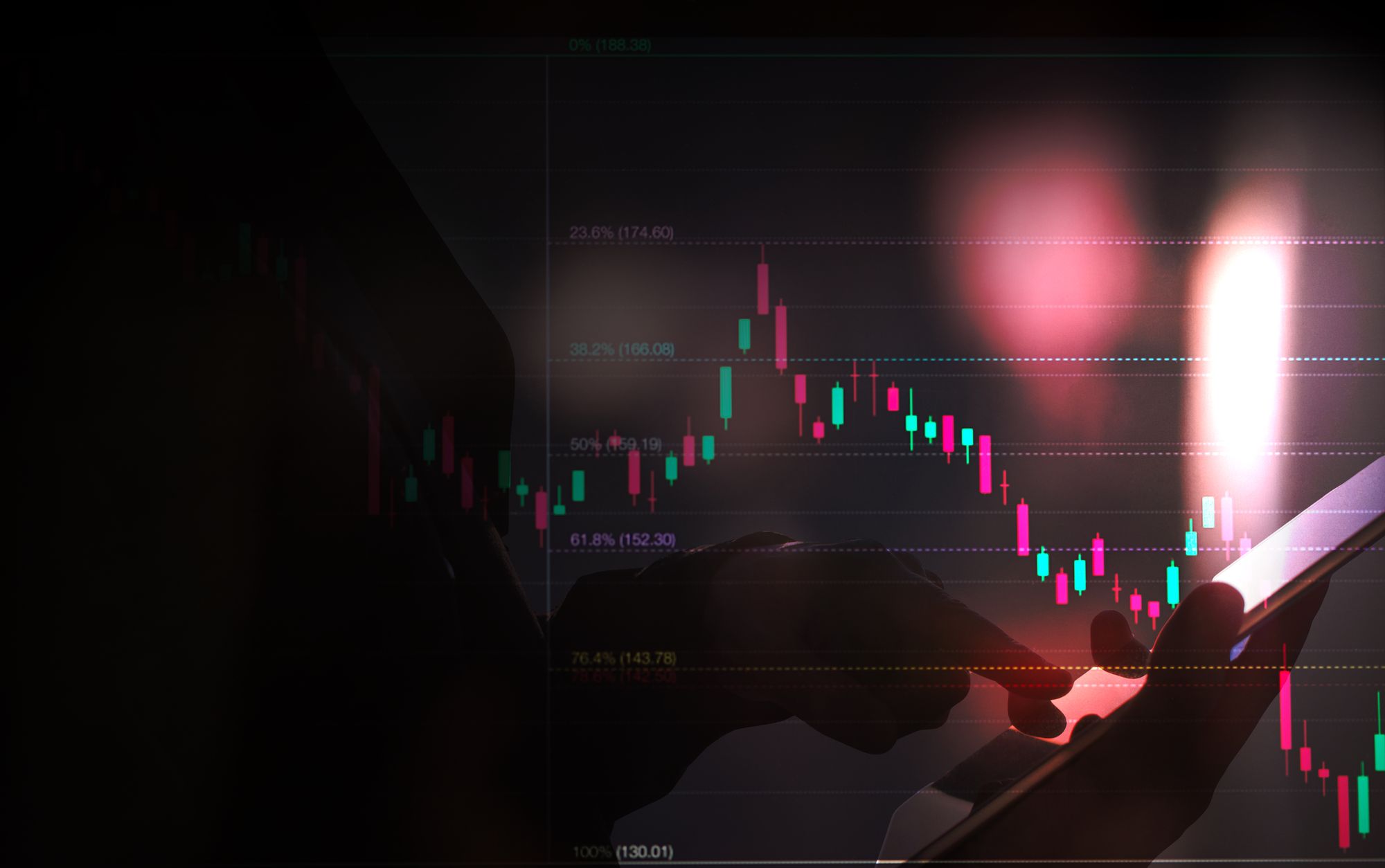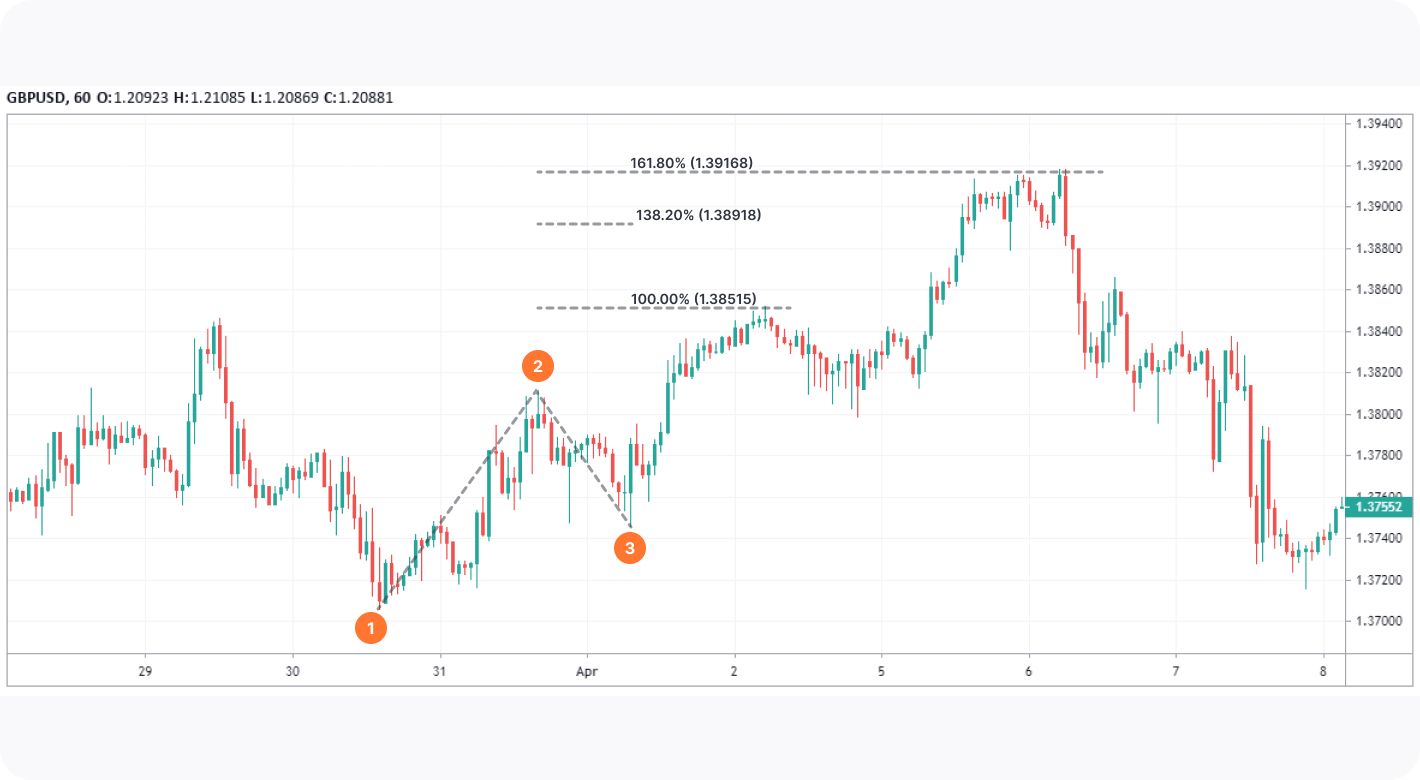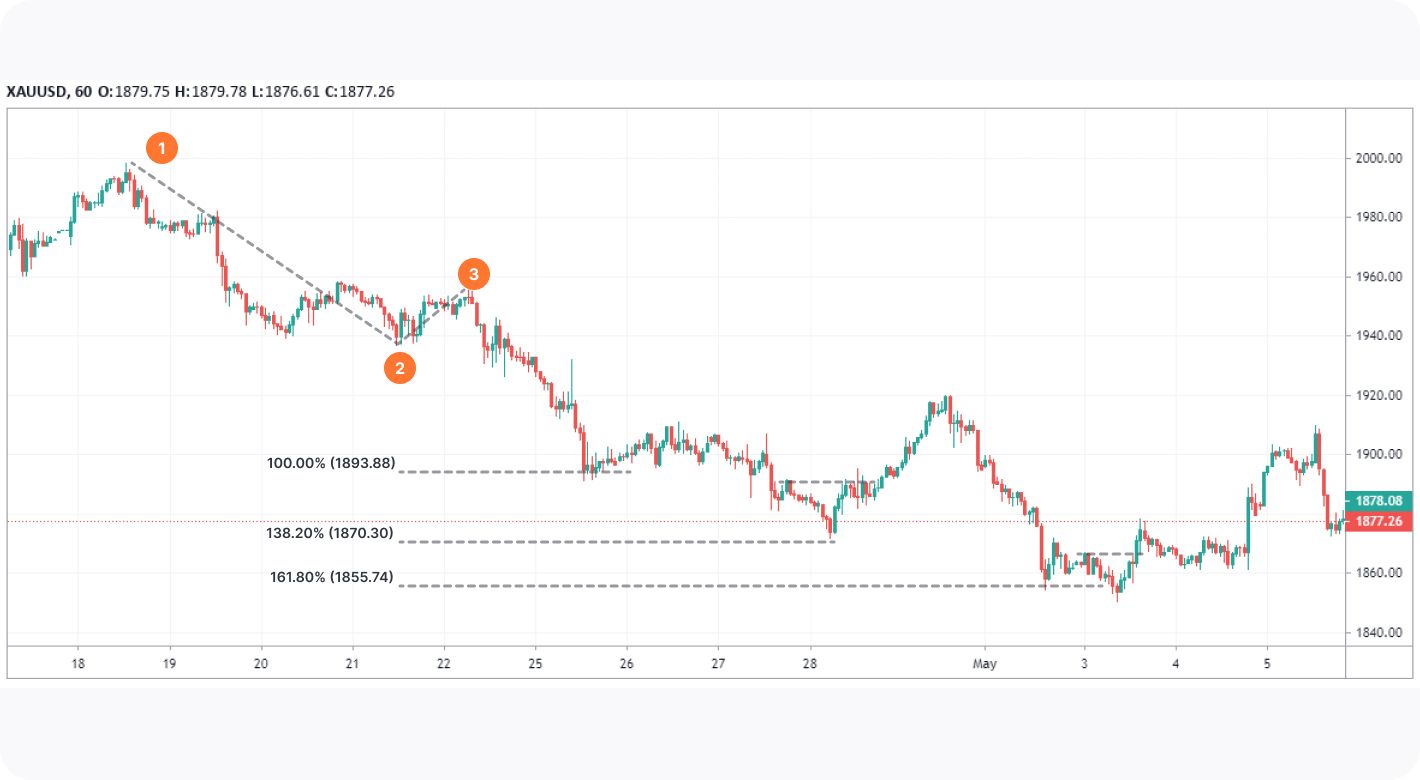FXOpen

Have you ever noticed that market movements often seem to occur in repeatable patterns? Well, that’s where Fibonacci extensions come into play. Join us in this article as we dive into the world of Fibonacci extensions and discover how they can be a strong addition to your trading arsenal.
A Primer on Fibonacci Ratios
Fibonacci ratios are derived from the Fibonacci sequence, where each number is the sum of the two preceding numbers. The sequence begins with 0, 1, 1, 2, 3, 5, 8, 13, 21, 34, 55, and so on.
The primary Fibonacci ratio of 1.618, sometimes called the Golden Ratio, is found by dividing one number by the previous. 34 divided by 21, for example, roughly equals 1.619. As the sequence progresses, the ratio becomes more precise and closer to 1.618. Dividing a number by the next, such as if we divide 13 by 21, will give us a ratio of 0.618 (0.619 in the case of 13/21), also commonly used in Fibonacci retracements.
Further calculations produce the Fibonacci extension levels we’re interested in: 1, 1.382, 2, 2.618, and 4.236. In trading, they’re typically expressed as percentages, like 100%, 138.2%, 200%, 261.8%, and 423.6%.
What are Fibonacci Extensions?
Fibonacci extensions (also known as Fibonacci expansions or Fib extensions) are a technical analysis tool that allows traders to determine potential levels of support and resistance for an asset’s price. Like regular support and resistance levels, they should be considered as areas of interest rather than where price will turn with pinpoint precision. They’re most frequently used to set profit targets, although they can also be used to find entries.
Fibonacci extensions can be applied to any market, including forex, commodities, stocks, cryptocurrencies*, and more, and work across all timeframes. While not foolproof, using the Fibonacci extension tool combined with other forms of technical analysis can be an effective way to spot potential reversal points in financial markets.
Fibonacci Retracements vs Extensions
Both Fibonacci retracements and extensions are based on the Fibonacci sequence and the Golden Ratio, but they are used to measure different things in the market. Fibonacci retracements show support and resistance levels during a pullback from a larger move. On the other hand, Fibonacci extensions measure the potential levels of support and resistance for an asset's price after a pullback has occurred.

As shown in the chart above, the Fibonacci retracement tool can be applied to identify where price may pull back to – 50% in this scenario. Then, the Fibonacci extension tool is used to plot where price could end up beyond this pullback. The 100% and 161.8% levels posed significant resistance, causing the price to reverse.
It’s easy to see how both tools can be used in conjunction to build an effective strategy. Generally speaking, traders tend to enter on a pullback to one of the key retracement levels, then take profits at the extension levels. However, either tool can be used to find areas suitable for entries and exits.
Fib Extensions: How to Use

If you’re wondering how to use Fib extensions in your own trading, here are the steps you need to follow. To get the best understanding, use the Trend-Based Fib Extension tool found on the TickTrader platform by us at FXOpen to apply each step.
- Click to set the first point at a major swing low if expecting bullishness or swing high if expecting bearishness. Using the Magnet mode on TickTrader may help you set it with precision.
- Place the second point at a swing in the opposite direction.
- Put the third point at the low of the pullback if a bullish move is expected or the high if a bearish move is expected.
That’s it! You now have an idea of where price may reverse as the trend progresses, allowing you to set profit targets or plan entries. You can also double-click the tool to adjust it to your preferences, like removing certain levels and changing colours.
Bullish Example

In this example, we have a swing low (1) followed by a swing high (2) that makes a retracement (3). These three points are all we need to plot a Fibonacci extension. Notice that the 138.2% level didn’t hold, showing that price isn’t always guaranteed to reverse in these areas. However, the wicks and sustained moves lower at the 100% and 161.8% areas gave traders confirmation that a reversal might be inbound.
Bearish Example

Here, we can see that each of the three areas prompted a pullback. Some traders might not consider the 138.2% area valid to trade since it never fully hit the level. However, the easiest way to get around this is to look for confirmation with a break of the trend, as denoted by the first dotted line. Once price gets beyond that swing high (intermittently breaking the downtrend), traders have confirmation that what they’re looking at is likely the start of a reversal.
Some traders subscribe to the belief that if price closes beyond a level, it’ll continue progressing to the next area. While this can sometimes be the case, it can just as easily reverse. Here, price briefly closed below the 161.8% level before continuing much higher.
Making the Most of Fibonacci Extensions
By now, you may have a decent understanding of what Fib extensions are and how to use them. But how do you make the most out of Fibonacci extensions? Here are two tips to maximise your chances of success.
- Look for confirmation: Instead of blindly setting orders at extension levels, you can look for price action confirmation that price is starting to reverse at the area before taking profits or entering a position. You could do this by looking for breaks in the trend, as discussed in the example above.
- Find confluence: Similarly, you can use other technical analysis tools like trendlines, indicators like moving averages, or even multiple Fibonacci extensions, to give you a better idea of how price will likely react at a level.
Your Next Steps
Now, it’s time to put your understanding to the test. Spend some time practising how to use Fibonacci extensions and try backtesting a few setups to see how you could’ve gotten involved in a trade. Once you feel you have a solid strategy, you can open an FXOpen account to start using your skills in the live market. In the meantime, why not try exploring other Fibonacci-related concepts, like Fibonacci retracements and harmonic patterns?
*At FXOpen UK, Cryptocurrency CFDs are only available for trading by those clients categorised as Professional clients under FCA Rules. They are not available for trading by Retail clients.
This article represents the opinion of the Companies operating under the FXOpen brand only. It is not to be construed as an offer, solicitation, or recommendation with respect to products and services provided by the Companies operating under the FXOpen brand, nor is it to be considered financial advice.
Stay ahead of the market!
Subscribe now to our mailing list and receive the latest market news and insights delivered directly to your inbox.








